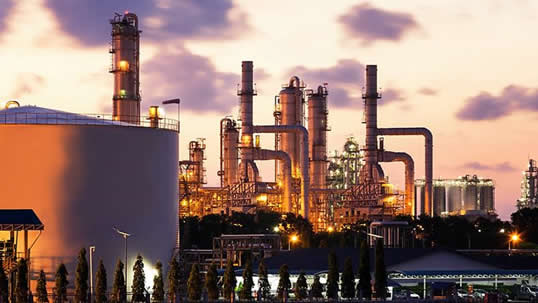
Regenerative Thermal Oxidizer for Fumes from Coating Processes
There are many coating processes which involve not only painting or coating a product to be finished, but also require the painting/coating to be heat cured. In the process ,the coating containing VOCs are carried through to the atmosphere as untreated fumes, causing problems to people and plants.
VOC or Volatile Organic Compounds are solvents used/found mostly in paints. These solvents, which aid paint applications by reducing viscosity and improving flow and levelling, are essential in many high value product coatings. They are particularly preferred as top coats as they provide excellent aesthetics and visual appeal.
Solvent-based paints and coatings are also preferred in various industries due to their resilience, smoothness and visual appeal. On application however, they emit Volatile Organic Compounds (VOCs) that can harm the environment and are therefore subject to strict regulation.
When the coatings are dried during the curing process, the VOCs are lost from the coatings as they mix with oxides and chemicals coming from emissions and exhausts. The VOCs react with other pollutants in the presence of sunlight to form ground level ozone.
Low level ozone of high concentration causes health problems in humans, such as asthma. It also damages vegetation, such as agricultural crops and forests. Low level ozone mixes with air-borne particulate matter to form smog.
Ozone concentration in cities is increasing, leading to major smog problems. Smog occurs in many large cities which have a lot of industry and high average sunlight levels.
Smog is a worsening problem in cities of developing countries. Developed countries are looking for further improvements in air quality. To control the build-up of smog and ozone, countries have introduced legislation which limits the amount of ozone pre-cursors: NOX, SOX and VOCs.
Due to the impact of VOCs, legislation is getting tougher at an increasing rate as well as spreading geographically.
Volatile organic compounds are found in the following commonly used products.
- Gasoline, fuels & solvents, paints, stains, strippers
- Pesticides
- Personal care products
- Aerosol sprays
- Cleaners and room deodorizers
- New cabinets, furniture, and beds
- New carpets, rugs, and wood floors
- Can manufacturing
- Newspaper and magazine printing
- Chemical industry
- Automobile industry
- Painting process in any industry
Whatever is the industry or application, wherever VOC containing products are used, they do create an environmental problem if not addressed properly.
What can be done to reduce VOC emissions?
For one, the VOCs can be thermally treated in a Regenerative Thermal Oxidiser (RTO) so that cleaner air is exhausted to the atmosphere.
Will such air be safe to breathe?
The emissions after the RTO will contain negligible VOCs such that it will have no impact on humans, animals and plants.
What are the guaranteed emissions?
The emissions depend on VOC content, residence time of the gas in the combustion chamber and downstream equipment. Whatever be the local regulations, these can be met.
The operating cost of such an RTO may be high?
No. On the contrary, the operating cost is next to nothing, as the RTO will be self-sustaining. Check our detailed process write up below.
The RTO’s combustion chambers are provided with ceramic honeycomb filters which absorb and retain high heat generated during thermal treatment of the VOC containing gas which is released when cold gas is passed through it, so as to oxidise the VOC containing gas. The outgoing gas with high heat is used to preheat the filters located in its path to exhaust.
What is required is only a pilot burner to heat the incoming gas and after this no further fuel is required, unless the VOC content in the gas becomes less, necessitating automatic ignition of such gas with the help of the burner.
You will see from the above that there is very little cost involved in running the system. Of course, the cost of power in running the fans and motors will have to be taken in to account.
Haat has supplied a number of RTOs to varied applications like painting, newspaper, magazine, can manufacturing, etc.
These systems are fully automatic and will function without any manual intervention if operated as per our instructions.
Haat is happy to be able to contribute to a CLEANER AIR AND ENVIRONMENT through its RTOs.


